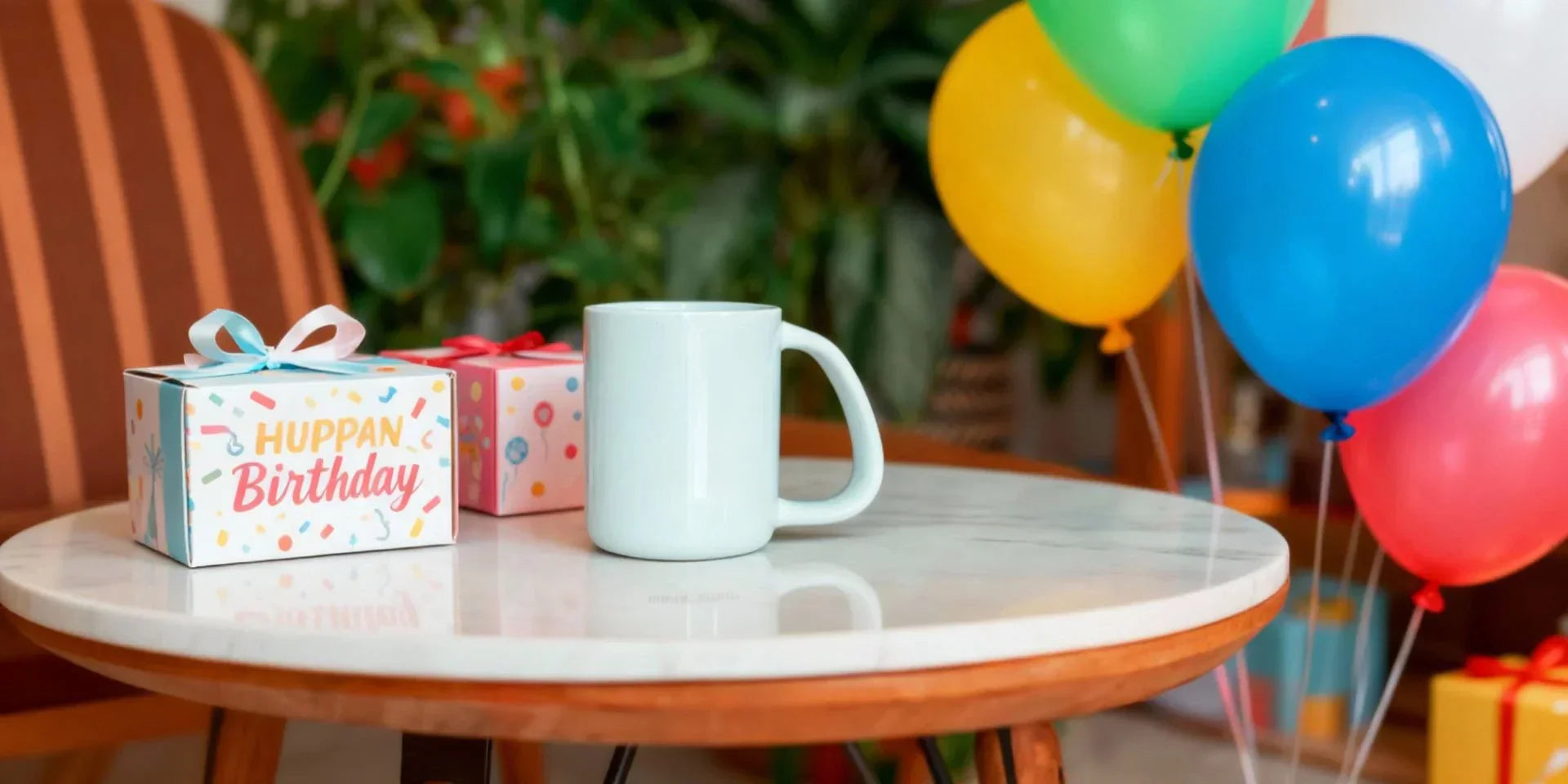The short answer is complicated: ceramic mugs cannot be recycled through your regular curbside bin. They may look like a sturdier version of glass, but ceramics belong to a completely different category of materials, one that most recycling facilities simply can’t process. It’s a frustrating reality for anyone striving to live sustainably, yet it’s worth understanding why this everyday essential doesn’t fit neatly into modern recycling systems. At CURVD, we believe sustainability starts long before recycling, with design choices that last longer, waste less, and turn everyday use into a mindful habit.
What Are Ceramic Mugs Made Of?
Ceramic mugs are typically crafted from a mixture of natural clay, minerals, and water, shaped and then fired in kilns at extremely high temperatures, often over 1,200°C. This process transforms soft clay into a hard, non-porous material that resists heat, moisture, and staining. Most mugs are also coated with a glaze, a glass-like finish that adds color, shine, and durability. To understand how these coatings affect everyday use, explore our guide on whether ceramic mugs are dishwasher safe.
This combination makes ceramics beautiful and long-lasting, but also difficult to recycle. Once fired, ceramic materials cannot be easily re-melted or reshaped. Their strength is what makes them perfect for your daily coffee, yet that same resilience is what makes them almost impossible to process in standard recycling systems.
Ceramic Mug Recycling Summary
|
Feature |
Ceramic Mug |
|
Recyclability |
Not accepted in most curbside recycling programs |
|
Melting Point |
Extremely high, beyond standard recycling facility |
|
Durability |
Very strong and long-lasting, but difficult to process once broken |
|
Best End-of-Life Option |
Reuse, repurpose, or donate |
|
Eco-Friendly Tip |
Keep using your mug as long as possible, reusing beats recycling |
Why Standard Recycling Systems Struggle with Ceramics
1. Melting Point Mismatch
Glass recycling facilities are designed to process materials with specific melting points. Ceramics require far higher temperatures and do not behave like glass when heated. A single ceramic shard mixed into a batch of glass can ruin the entire melt.
2. Contamination Risk
Ceramics are often coated with glazes, decals, or painted finishes that contain various additives. If you are curious about how different decoration methods affect sustainability, read our article on decal printing vs stickers for mugs. Even a small fragment can contaminate recycling streams intended for glass or other materials. Handles, labels, or metallic accents make sorting even more complicated.
3. Sorting Difficulties
Recycling plants rely on automated systems that identify and separate materials using light, magnets, and sensors. Ceramics do not register like glass or plastic, so they are often rejected or sent to landfill despite being perfectly reusable in other ways.
So when you toss a ceramic mug into your recycling bin hoping to do the right thing, it can actually cause more harm than good by disrupting the recycling process instead of helping it. You can also compare how different materials behave in our guide on ceramic mugs vs enamel mugs.

What You Can Do Instead of Standard Recycling
1. Repurpose or Upcycle
Before thinking “end of life,” think “new purpose.” A chipped or old CURVD mug could easily become:
-
a mini planter for herbs or succulents
-
a pen or makeup brush holder
-
a candle mold
-
a decorative container
Creativity gives new life to what would otherwise be waste.
2. Donate Still-Usable Mugs
If your mug is intact but unused, donate it. Thrift stores, cafés, or community kitchens often welcome second-hand mugs. Reuse almost always beats recycling.
3. Check for Specialized Recycling Centers
Some facilities or construction sites accept ceramics as inert materials. Crushed ceramic can be reused as aggregate in building foundations, pathways, or new tiles. Check with your local waste management center to see if such programs exist.
4. Remove Attachments and Clean
If you are sending mugs to a special recycling center, always clean them and remove any non-ceramic parts such as rubber bases or metal accents. Clean materials are easier to process and less likely to be rejected. You can also make your daily cleanup more sustainable by following our eco-friendly dishwashing tips.
CURVD’s Approach: Smart Design Meets Mindful Use
At CURVD, sustainability begins long before the recycling stage. We focus on creating ceramics that last longer, age beautifully, and reduce the need for replacements. Each CURVD mug is crafted from high-quality ceramic clay, fired for durability, and coated with a lead-free, food-safe glaze for longevity. They also make thoughtful, sustainable presents, discover why our mugs are among the best long-lasting birthday gifts.
Our philosophy is simple: the most sustainable mug is the one you never have to throw away. Durability means fewer broken mugs, less waste, and more thoughtful consumption. And because each CURVD piece is designed for both function and form, it becomes part of your daily ritual, not another object to discard.
Wrap-up
Recycling ceramics is not simple, but sustainability does not stop at the bin. It starts with how a product is made, used, and valued. By choosing a CURVD ceramic mug, you are choosing a design built to last, crafted with care, and made for years of daily use. Explore our full CURVD collection to find your next sustainable favorite.
The real act of recycling begins with keeping, not discarding. Every time you choose to reuse, you reduce waste, and that is the quiet power of mindful design
FAQs
Can I put a ceramic mug in my curbside recycling bin?
Almost never. Most recycling systems are built for materials like glass, paper, and certain plastics. Ceramics disrupt that process, so it is best to find a specialized facility or reuse your mug instead.
Are ceramic mugs recyclable at all?
Yes, but not through normal curbside collection. Ceramics can sometimes be ground down and reused as construction filler or raw material for new ceramic products, but this requires specialized processing centers.
What should I do with a broken ceramic mug?
If repurposing is not possible, wrap the pieces safely and check if your local waste facility accepts ceramics. If not, dispose of them carefully in general waste.
Why can’t ceramic mugs simply be melted and turned into new mugs?
Because ceramics require extremely high temperatures to break down, and their glazes often contain materials that cannot be re-melted safely. Recycling ceramics into new ceramics is a complex, energy-intensive process.
How does using a durable ceramic mug help the environment if I cannot recycle it easily?
Because the biggest sustainability win comes from reducing waste at the source. A long-lasting mug eliminates the need for constant replacements, cutting down on manufacturing energy, shipping emissions, and packaging waste.









